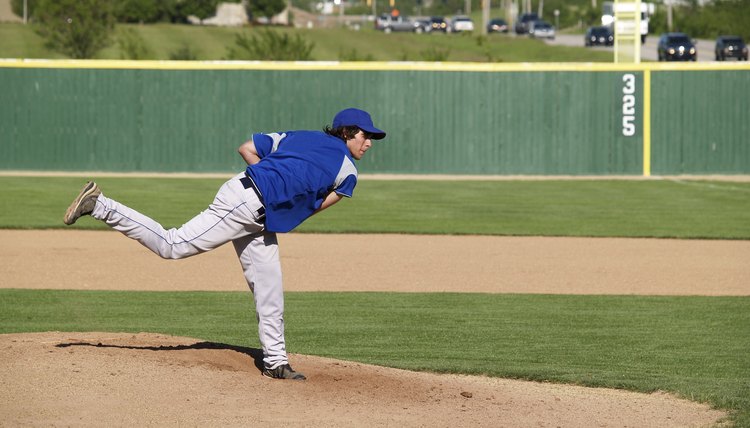How to Treat Arm Soreness in Baseball

Arm soreness is a common condition among baseball players of all ages, but it is usually not a cause for concern at all. You can take numerous steps to ensure that the soreness goes away and does not lead to a more serious condition. Taking the time and effort to prevent and treat arm soreness will help you continue playing the game with the least amount of discomfort as possible.
Preparing To Throw
You can help prevent post-throwing soreness before you even touch a baseball. Always remember to complete a thorough stretching program if you know you will be throwing that day. It's important to remember that throwing a baseball is a full body motion -- you must stretch the whole body in order to take as much stress off the arm as possible.
Icing Your Arm
Right after pitching, it's important to place a bag of ice on your shoulder and your elbow as soon as possible. During the first hour, apply the ice for 15 minutes and then remove it for another 15. Repeat that process once more and then ice as needed. Obviously, a third baseman who made two throws across the field will most likely need less icing than a pitcher who throws 100+ pitches during a game.
Resting Your Arm
Most starters that have long outings are on a routine of four or five days. If this is the case, you should spend very little time throwing the first day after an outing; however, if the outing was a short one, it's alright to play light catch. Your arm will be most sore for the first two days after pitching. It's extremely important to limit your throwing in those two days, as that's the period during which your arm is most susceptible to injury.
Know When to Seek Help
There is a major difference between soreness and injury. If pain seems any more severe than normal or doesn't go away within three days after throwing, you should seek medical attention as to protect the function of your arm. Minor inflammation, if not given the proper attention, can lead to strains and tears, which are a baseball player's worst nightmare.
Writer Bio
Rob Costello is a journalism student at the George Washington University. He is a past member of the Division 1 baseball team at GW, and has been writing about subjects surrounding the MLB and other major sports for the past five years. Costello is an expert on pitching mechanics, baseball-specific exercises and the culture of baseball in general.
